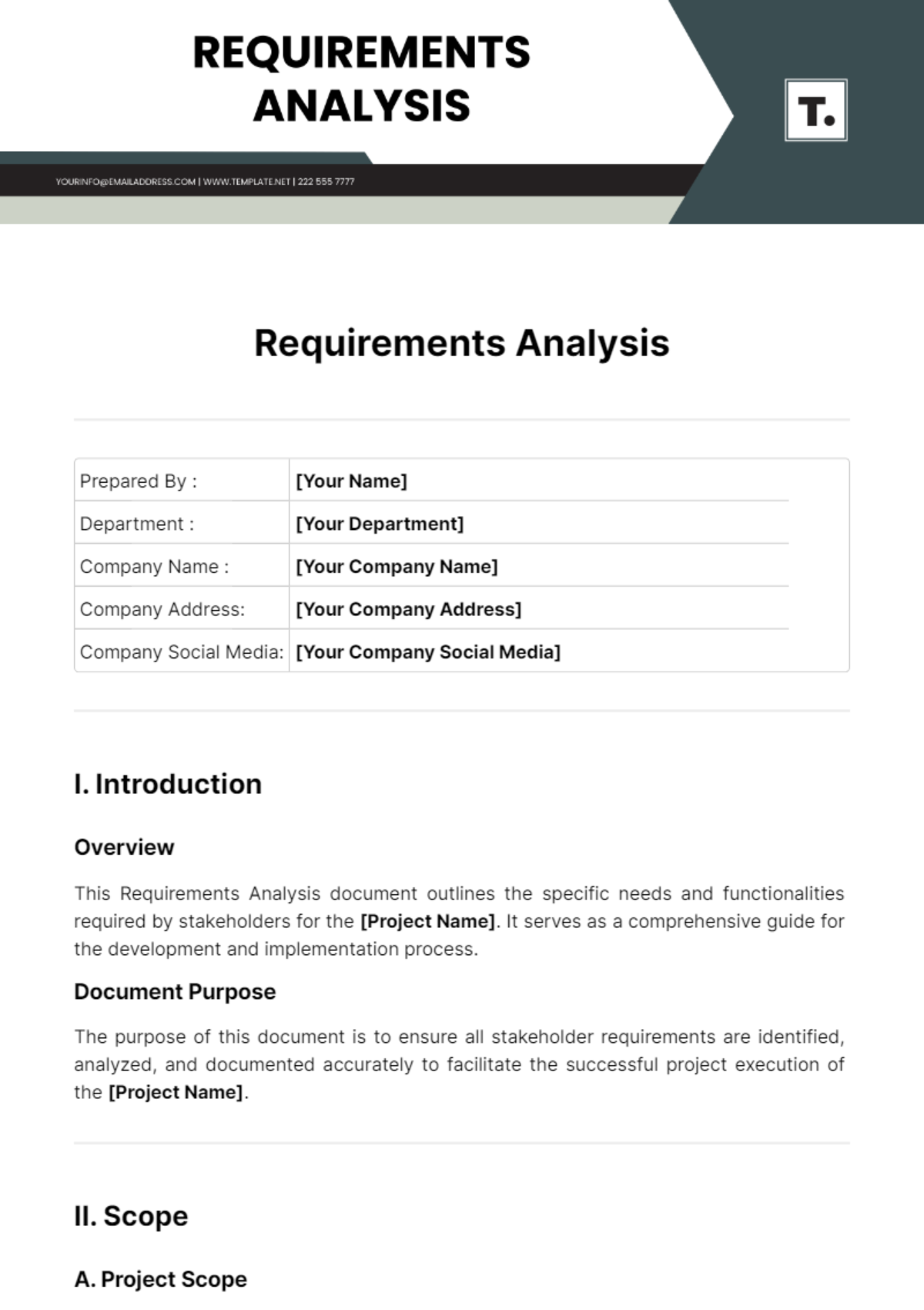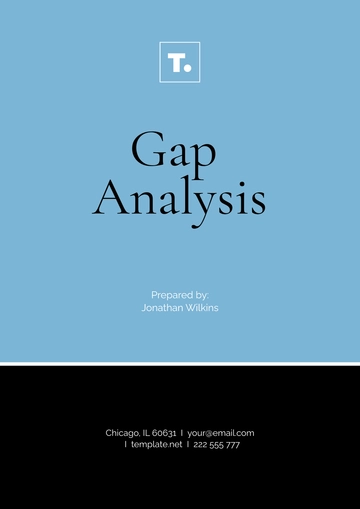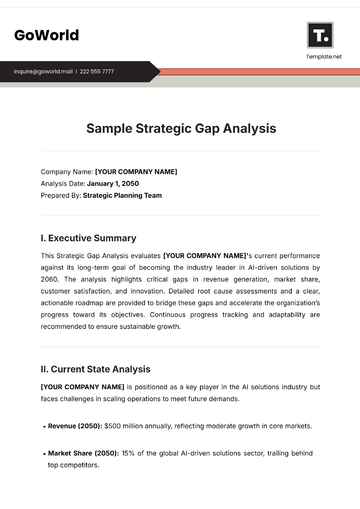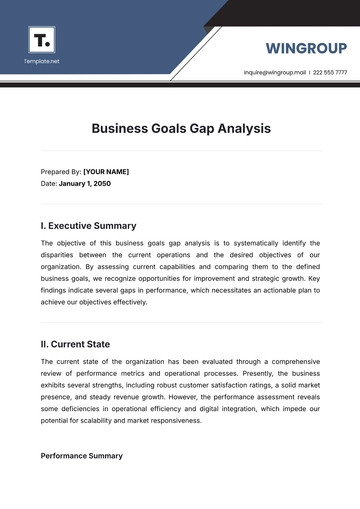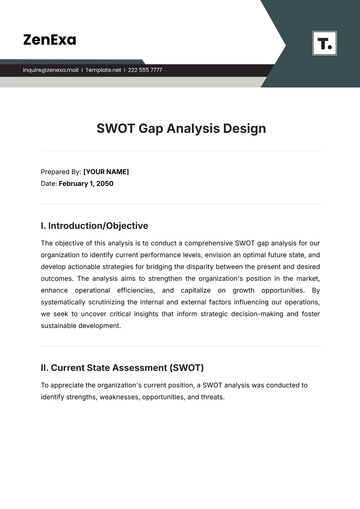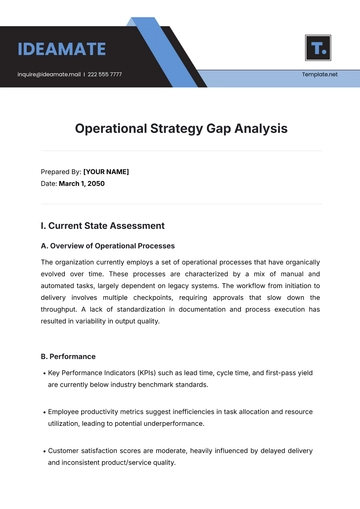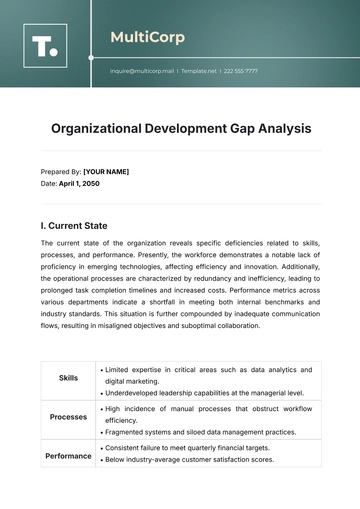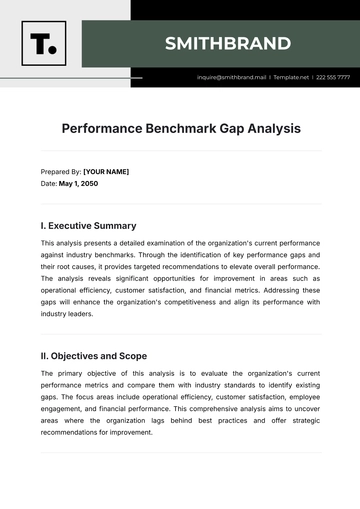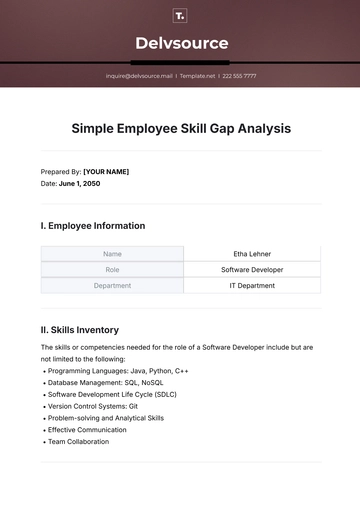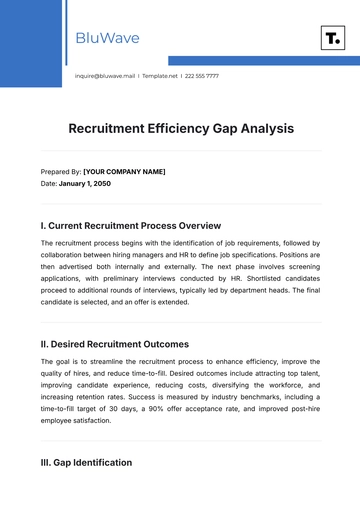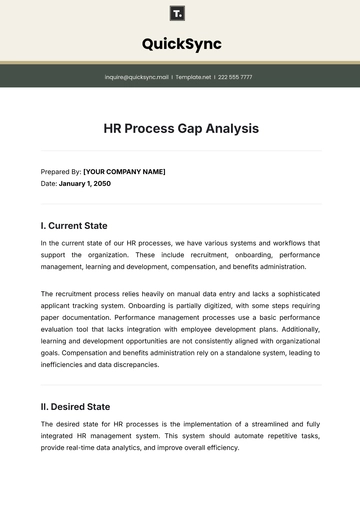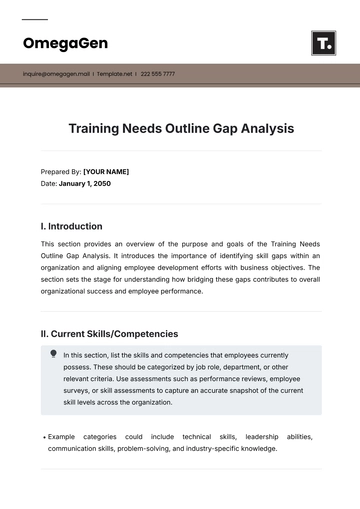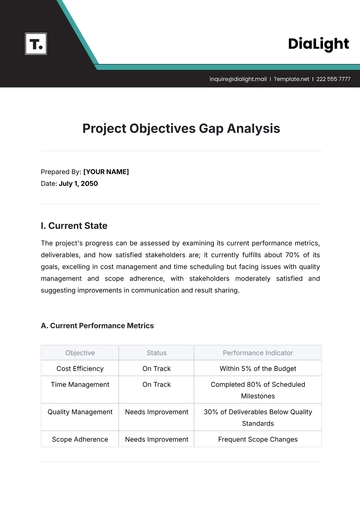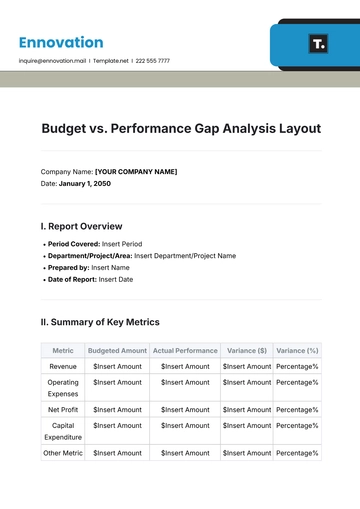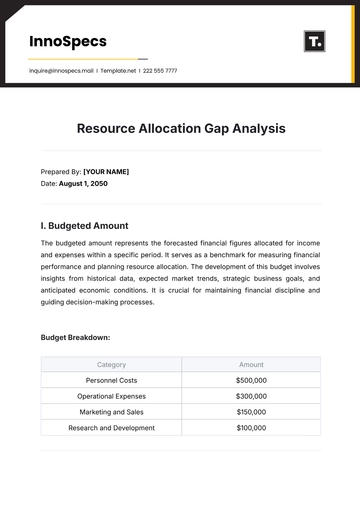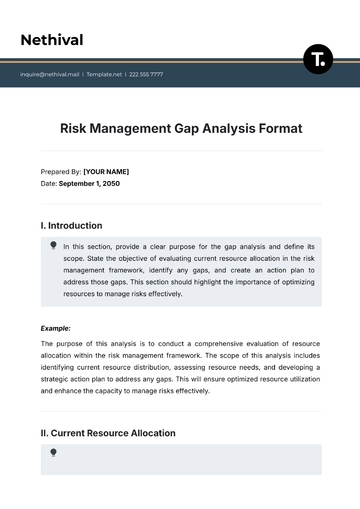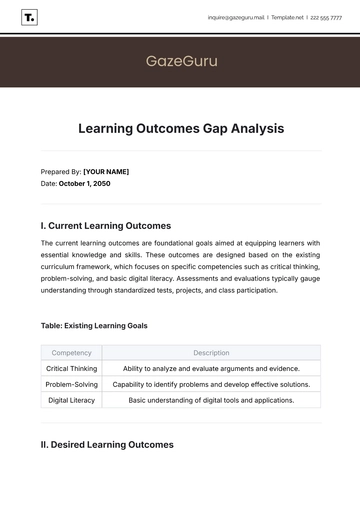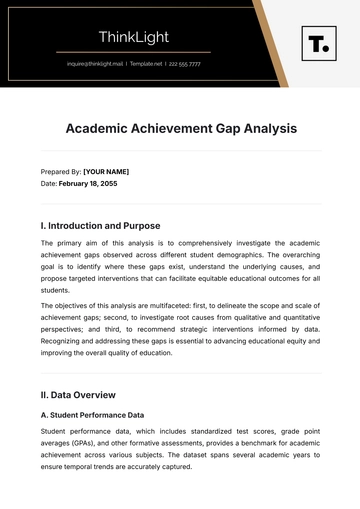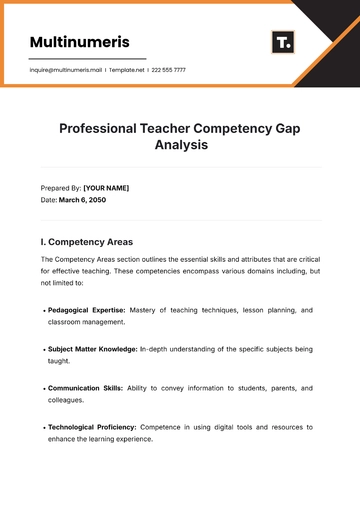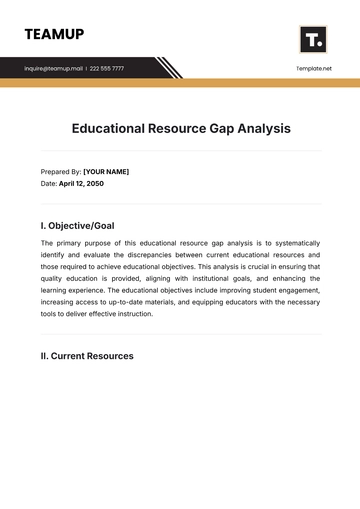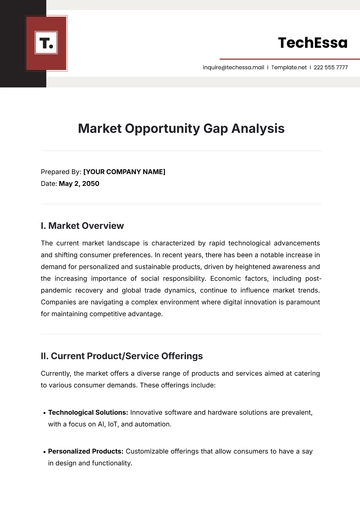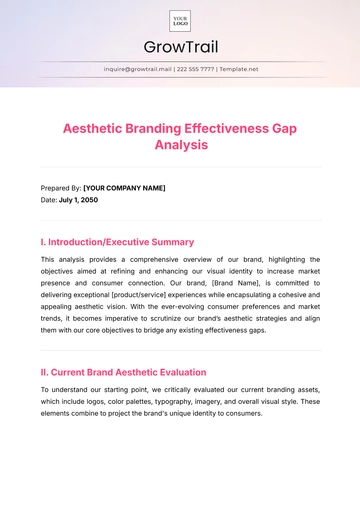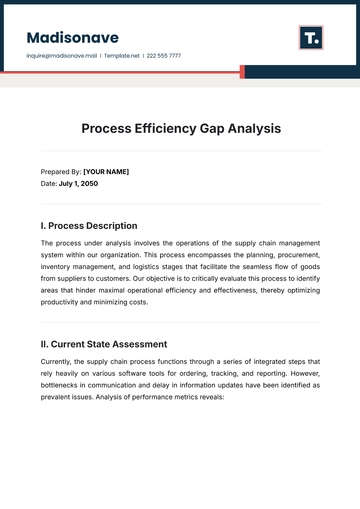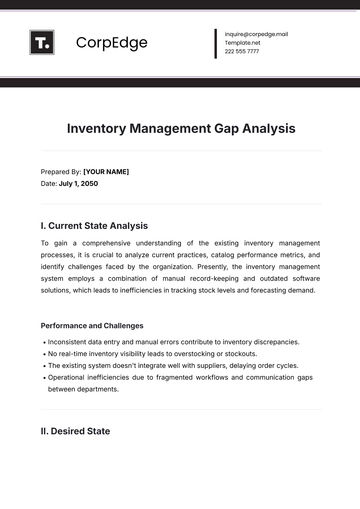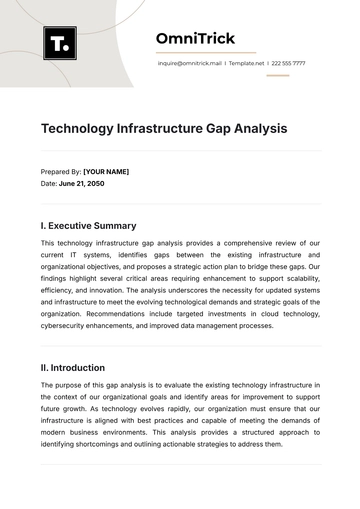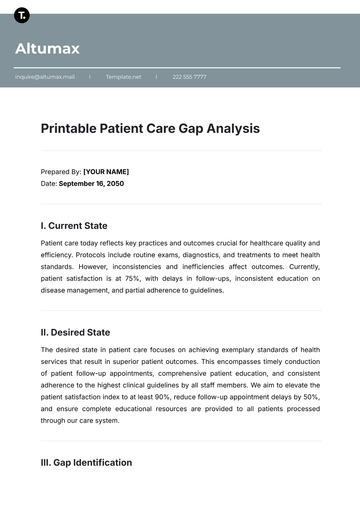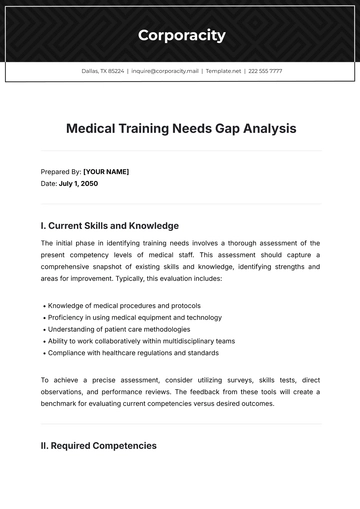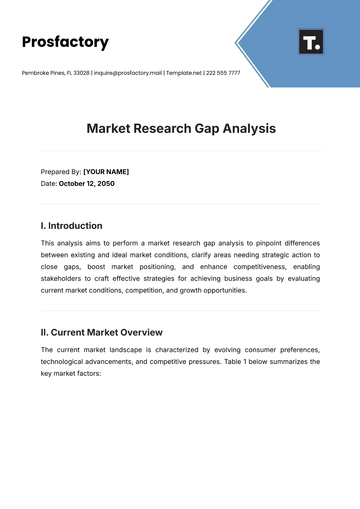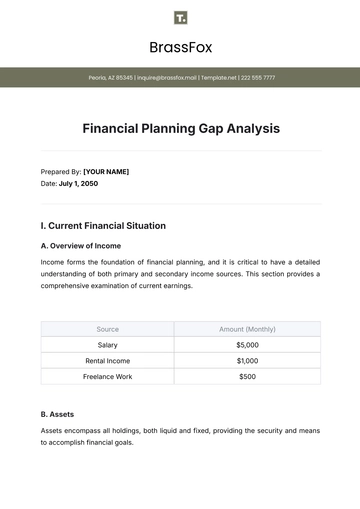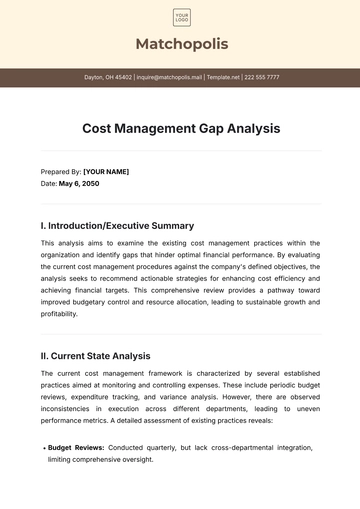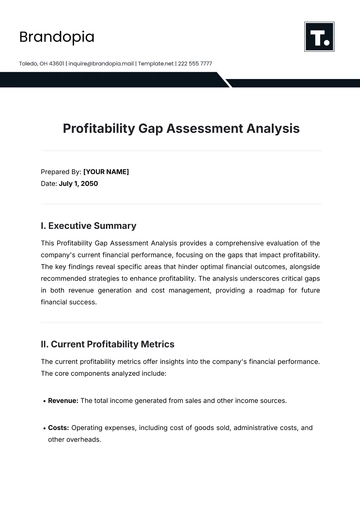Requirements Analysis
Prepared By : | [Your Name] |
Department : | [Your Department] |
Company Name : | [Your Company Name] |
Company Address: | [Your Company Address] |
Company Social Media: | [Your Company Social Media] |
I. Introduction
Overview
This Requirements Analysis document outlines the specific needs and functionalities required by stakeholders for the [Project Name]. It serves as a comprehensive guide for the development and implementation process.
Document Purpose
The purpose of this document is to ensure all stakeholder requirements are identified, analyzed, and documented accurately to facilitate the successful project execution of the [Project Name].
II. Scope
A. Project Scope
In Scope
Development of VR gaming environments including landscapes, characters, and interactive objects.
Integration with motion-sensing technology for immersive gameplay experiences.
Multiplayer functionality allows players to connect and play together in real-time.
B. Out of Scope
B. Objectives
Develop a diverse range of VR gaming environments to cater to various player preferences.
Ensure seamless integration with a wide range of VR hardware devices for maximum accessibility.
Implement robust multiplayer features to enhance social interactions within the virtual environment.
III. Stakeholders
A. Stakeholder Identification
Stakeholder Name | Role | Contact Information |
|---|
[Your Company Name] | Project Team | [Your Company Email] |
[Stakeholder 1 Name] | External Partners | [Stakeholder 1 Email] |
[Stakeholder 2 Name] | End Users | [Stakeholder 2 Email] |
B. Stakeholder Requirements
(a) [Your Company Name] Requirements:
Accessible development environment with support for collaboration tools.
Regular updates on hardware compatibility and industry trends.
Comprehensive documentation for easy integration with third-party systems.
(b) [Stakeholder 1 Name] Requirements:
Detailed technical specifications for hardware compatibility.
SDK (Software Development Kit) for seamless integration with the gaming platform.
Regular communication regarding software updates and bug fixes.
IV. Functional Requirements
A. Requirement Details
VR Gaming Environment Creation
Description: Users can create and customize their virtual reality gaming environments using intuitive tools and interfaces.
Priority: High
Dependencies: Integration with motion-sensing technology and robust rendering capabilities.
Multiplayer Functionality
Description: Support for multiplayer gaming experiences with seamless connectivity, including features such as voice chat and friend invitations.
Priority: High
Dependencies: Stable network infrastructure and efficient matchmaking algorithms.
Analytics Dashboard
Description: Provide an analytics dashboard for developers and administrators to track user engagement, monitor performance metrics, and gather feedback for continuous improvement.
Priority: Medium
Dependencies: Data collection mechanisms integrated within the gaming platform.
B. Use Cases
Use Case | Player Joins Multiplayer Game |
|---|
Description | A player joins a multiplayer game session to play with friends or other online players. |
Actors | Player, Game Server |
Preconditions | The player is logged in and connected to the internet. |
Postconditions | The player successfully joins the selected game lobby and begins gameplay. |
Main Flow | The player selects multiplayer mode from the main menu. The player chooses the desired game lobby or creates a new one. The player waits for the game server to matchmake and connect to the selected lobby. The player enters the virtual gaming environment and interacts with other players.
|
Alternate Flow | The player encounters network issues and fails to connect to the game lobby. |
V. Non-functional Requirements
A. Performance Requirements
B. Security Requirements
C. Usability Requirements
Provide clear and intuitive user interfaces accessible to players of all skill levels.
Support multiple input devices including VR controllers, gamepads, and keyboard/mouse setups.
VI. Project Constraints
VII. Project Assumptions
Availability of skilled software developers experienced in virtual reality technologies.
Continuous support and updates from VR hardware manufacturers to ensure compatibility and performance optimization.
VIII. Risks and Mitigation Strategies
A. Identified Risks
Technical Complexity: The project may encounter technical challenges beyond the team's expertise, leading to delays or failure to meet requirements.
Market Competition: Rapid advancements in virtual reality technology may result in changes to market demands and competitive landscape.
Resource Constraints: Limited availability of skilled personnel and budget constraints may impede project progress.
B. Mitigation Strategies
Technical Expertise: Regular training and upskilling programs for team members to address technical gaps and stay updated with emerging technologies.
Market Analysis: Conduct regular market analysis and competitor assessments to adapt project strategies and offerings based on changing market dynamics.
Resource Management: Efficient resource allocation and contingency planning to optimize utilization of available resources and mitigate budgetary constraints.
Analysis Templates @ Template.net
